Freon plays a vital role in your vehicle's air conditioning system to ensure it functions properly. However, if your car's air conditioning isn't blowing cold, how do you check your Freon levels? Let's take a look at the steps below.
To check your vehicle's Freon levels, follow these steps:
- Open the hood.
- Attach refrigerant gauges to the low- and high-pressure ports.
- Turn on the car.
- Next, turn on the A/C to cold with the recirculating setting on.
- Place the thermometer into the center vent.
- Let the vehicle run for a few minutes.
- Check the gauges.
- Then, check the thermometer.
- If low, add Freon.
Before you check your Freon levels, knowing what determines if your car needs more Freon is important. In this article, we will discuss the steps in further detail so you can accurately check and add Freon to your car. In addition, we will answer other frequently asked questions about Freon and refrigerant in your car's air conditioning system, so read on!
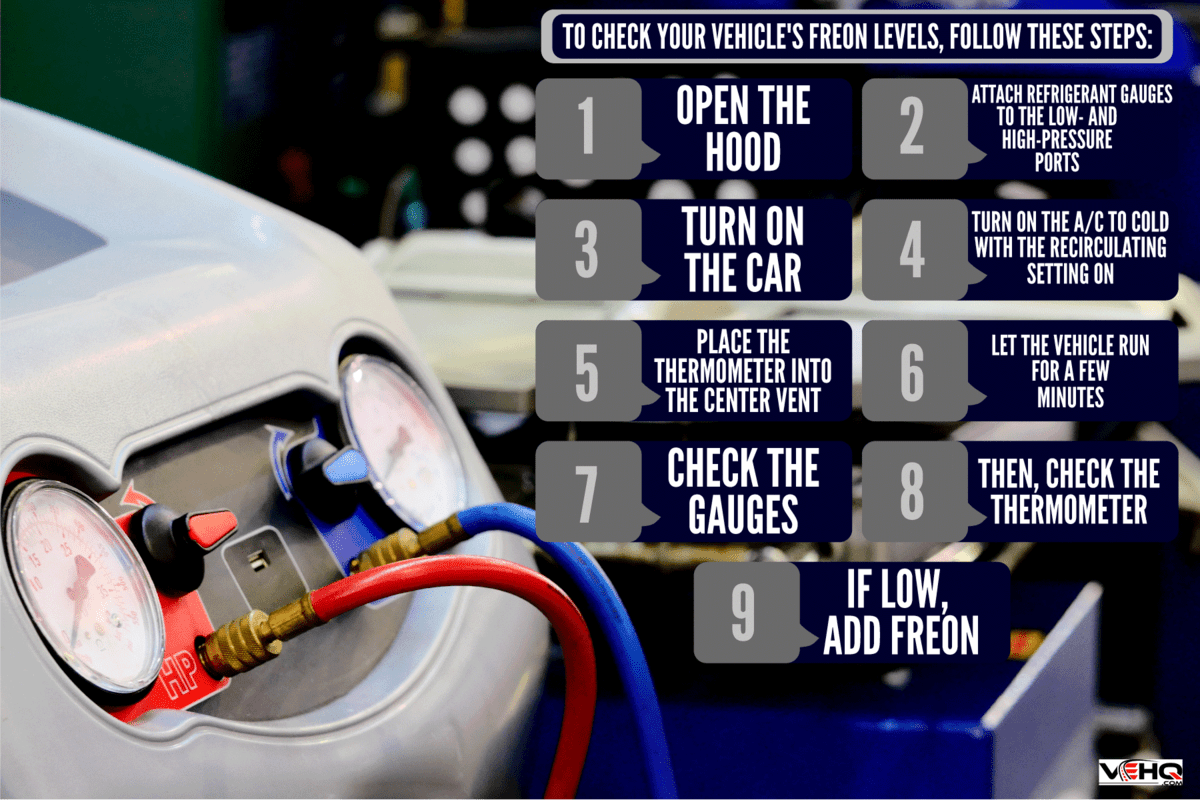
How Do I Check If My Car's Freon Is Low?
Freon is a type of refrigerant that helps to cool the air in your car. Freon is what allows your car's air conditioner to properly cool the air inside your car on hot summer days. So, if your car's air conditioner isn't blowing cold, one of the first things to check is the Freon level.
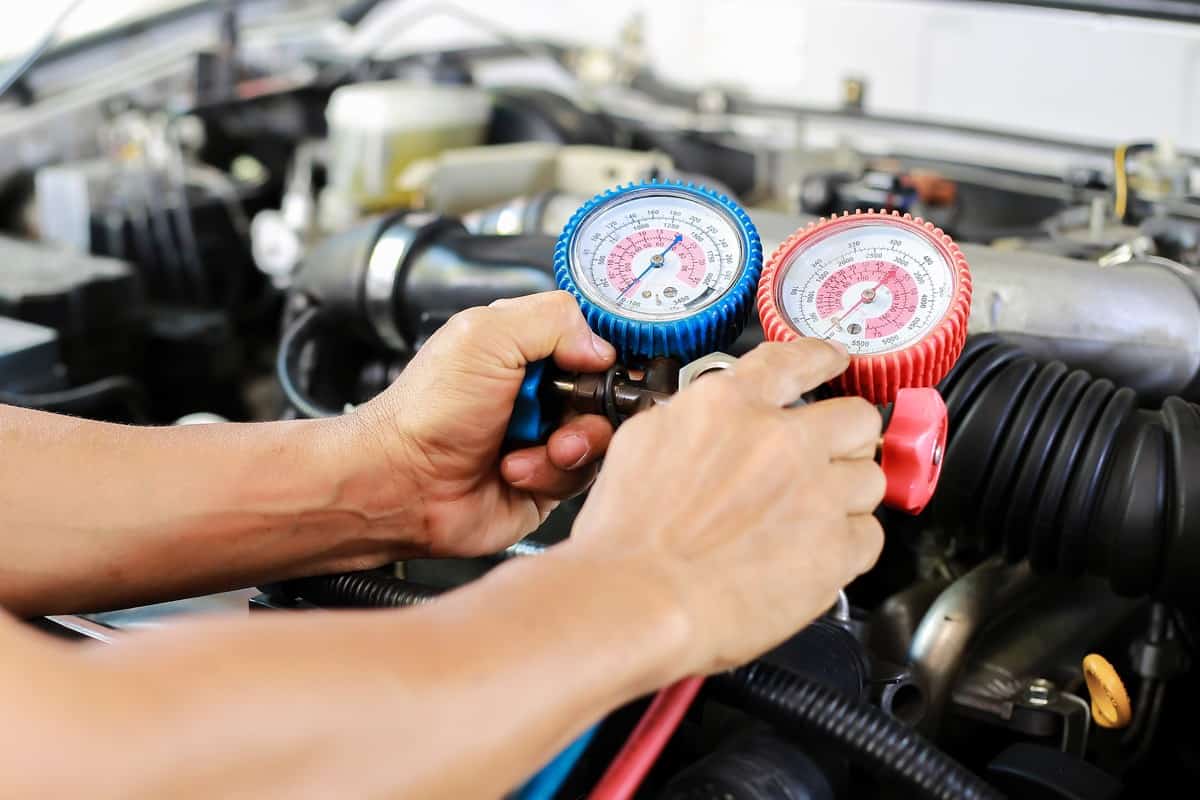
If you don't add Freon to your car when it's low, it can cause damage to your air conditioning system. To avoid this, it's essential to know how to check your Freon level and add more if needed. Keep reading to learn how to do this!
What you'll need:
- Refrigerant gauges
- Thermometer
- Freon
- Safety glasses
- Gloves
Open Hood And Attach Refrigerant Gauges
The first step is to open the hood of your car. Once you've done this, locate the low- and high-pressure ports on your car's air conditioning system. These are typically located near the compressor—a small, cylindrical device.
If you can't locate your ports, consult your car's owner's manual. Most refrigerant ports are labeled with an "L" for low pressure and "H" for high pressure.
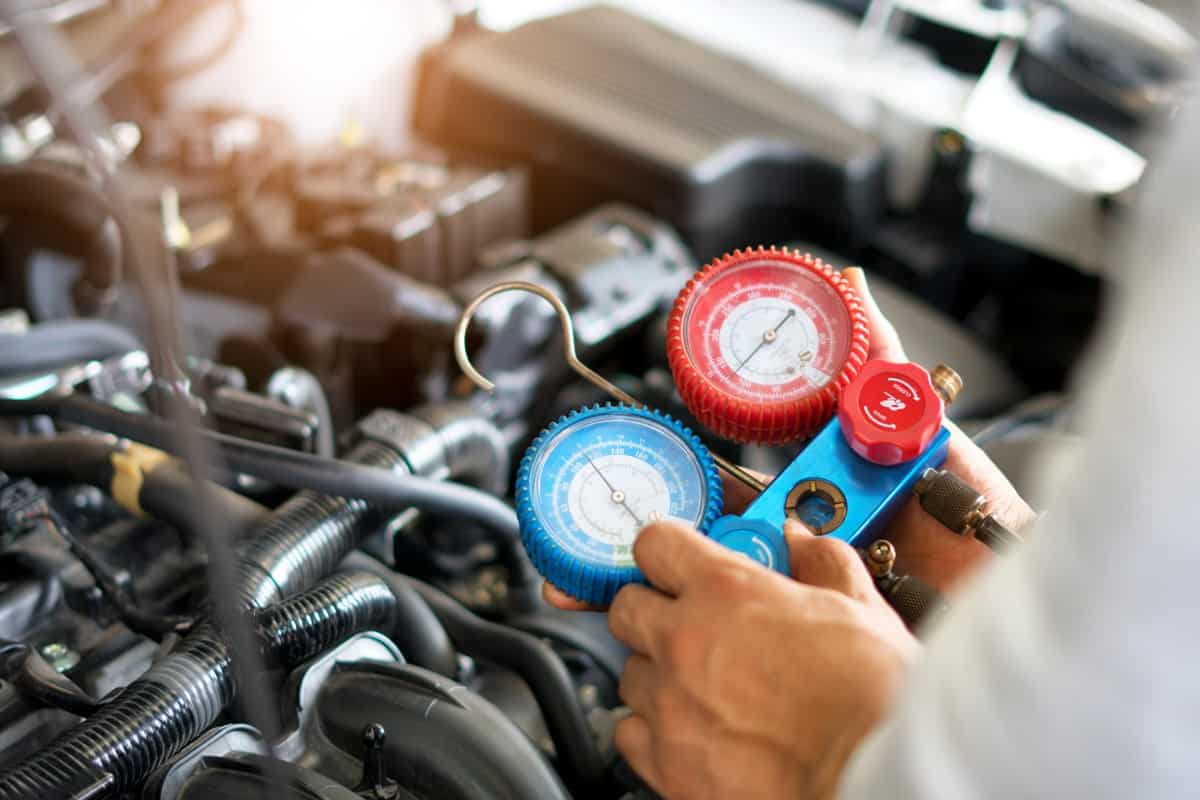
Next, attach your refrigerant gauges to the low- and high-pressure ports. Make sure that they are tight so that no air can escape.
Turn On The Car And A/C To Max Setting
Now, it's time to turn on your car. Once it's on, turn the air conditioning to the coldest setting and ensure that the recirculating setting is turned on.
This will help to ensure that you get an accurate reading. After you have done this, move on to the next step.
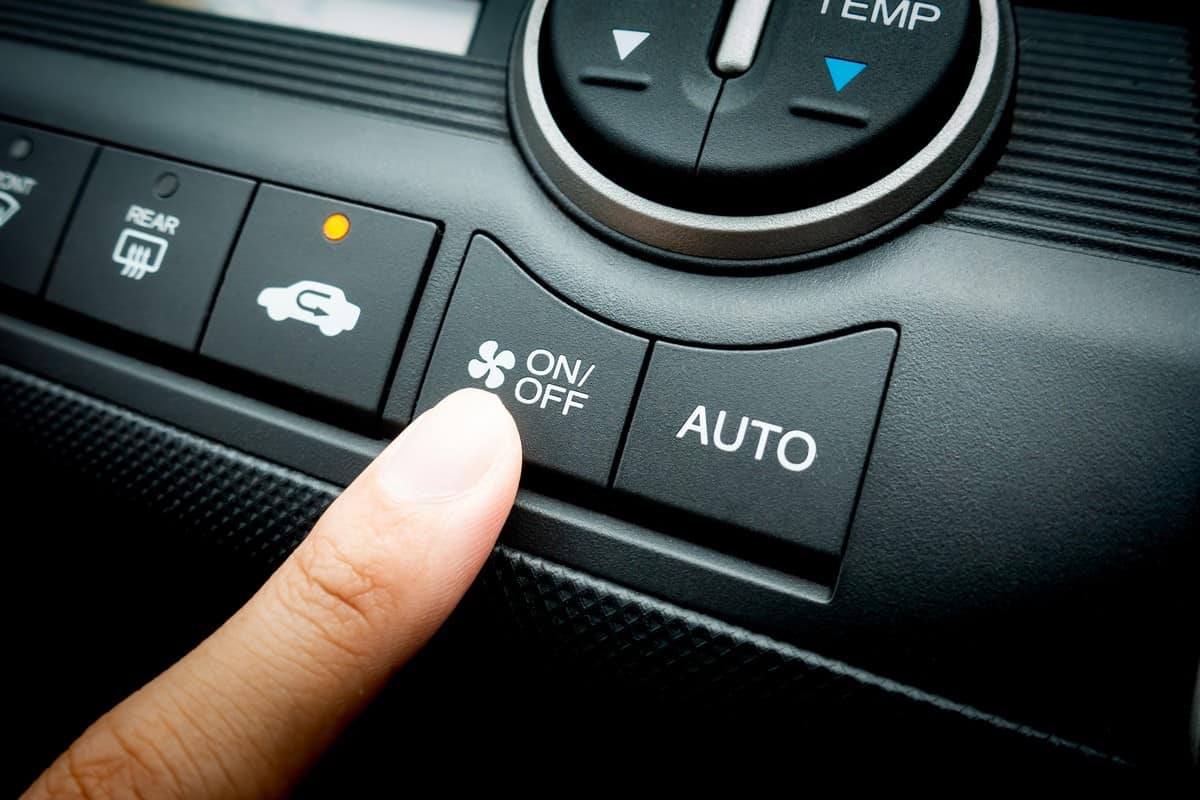
Place Thermometer In Center Vent
Next, you will take your thermometer and place it in the center vent. This will help you to get an accurate reading of the air temperature inside your car.
Let The Vehicle Run For A Few Minutes
Now, let your car run for a few minutes. This will give the air conditioner time to cool down the air inside your car.
Check The Gauges and Thermometer
After a few minutes, check the gauges to see what the reading is. The low-pressure gauge should be between 25 and 45 psi, and the high-pressure gauge should be between 250 and 400 psi.
If both gauges are below the minimum reading, your car needs more Freon. However, you should still check the thermometer. Typically, a reading of 40 degrees Fahrenheit or below means that your A/C is working correctly.
However, if the readings on both gauges are low and the thermometer is reading at a high temperature, there may be a Freon leak. In addition, you might need more Freon.
If the readings on both gauges are regular, then your car doesn't need more Freon.
Add Freon If Needed
If you find that your car needs more Freon, then you will need to add it.
- First, make sure that you are wearing safety glasses and gloves. This is because Freon can be harmful if it comes into contact with your skin or eyes.
- Next, locate the Freon can and connect it to the low-pressure port using the hose. Make sure that the valve on the Freon can is closed.
- Ensure your air conditioning is still on max and the recirculating setting is turned on.
- Now, open the valve on the Freon can and allow the Freon to flow into your car's air conditioning system. You will know it's time to stop when the low-pressure gauge reading is between 25 and 45 psi.
- Once you've added enough Freon, turn off the valve and disconnect the Freon can.
- Now that you've added Freon, it's essential to check for leaks. The best way to do this is to spray soapy water around the connections and look for bubbles. If you see any, then there is a leak that needs to be fixed.
Hopefully, this has helped you to understand how to check your car's Freon levels and add more if needed. Remember, it's always best to consult a professional if you're having trouble.
Can You Add Too Much Refrigerant To A Car?
Yes, it is possible to add too much Freon to your car. If you add too much Freon, it's possible to damage your car's compressor. This is because the compressor works with a specific amount of Freon.
If you add too much Freon, the compressor will have to work harder to compress the refrigerant. This can cause it to overheat and eventually fail.
Therefore, it's essential to only add the amount of Freon your car needs. If you're unsure how much to add, it's best to consult a professional.
How Long Does Refrigerant Last In A Car?
Depending on how much you use your car's air conditioning, a can of Freon can last anywhere from a few years to over five years. In addition, your environment can also affect how long a can of Freon lasts.
For example, if you live in a hot climate such as Phoenix, Arizona, you will probably use your air conditioning more often than someone with four months of winter.
Nonetheless, if your vehicle's air conditioning isn't blowing cold, the first thing you should check is the level of refrigerant, as this is the most common reason for air conditioning not to work.
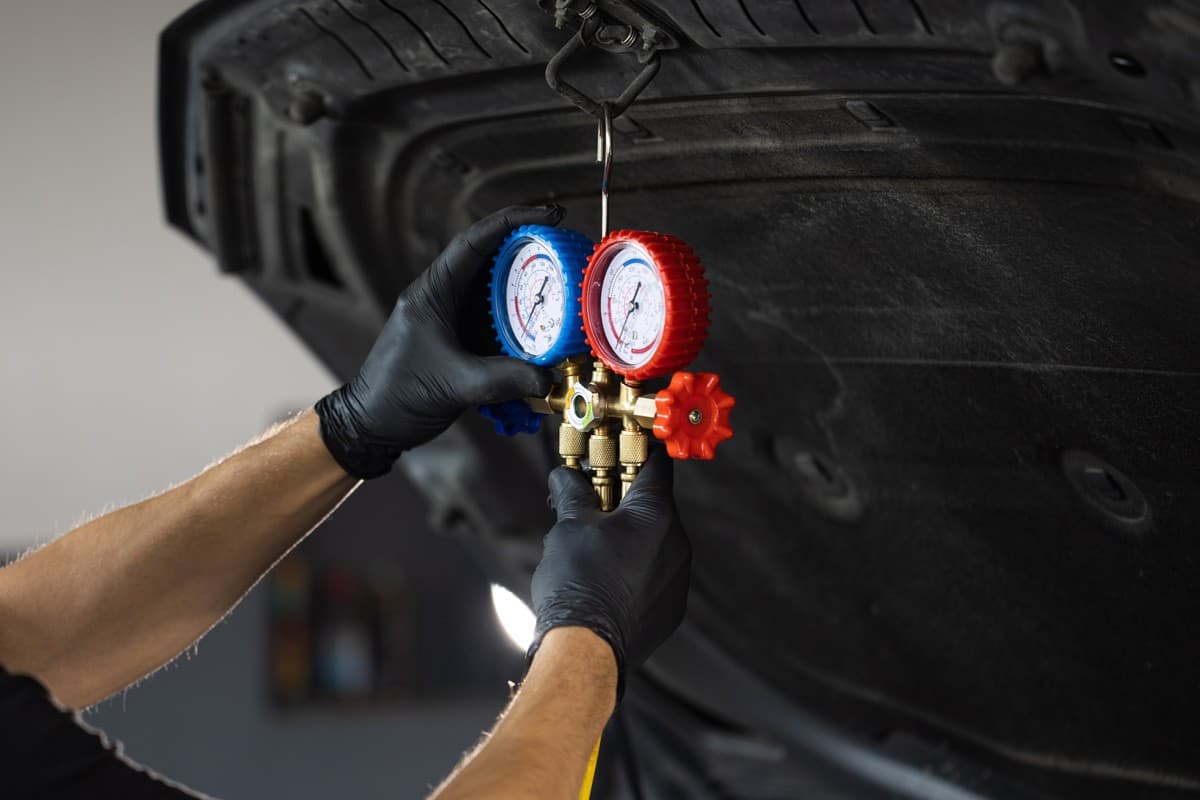
What Else Could Cause My Car's A/C To Not Blow Cold?
In addition to low refrigerant, there are a number of other reasons why your car's air conditioning may not be blowing cold. Let's take a look at them below:
Refrigerant Leak
While this is similar to low refrigerant, it is a bigger issue. If there is a leak in your car's air conditioning system, it must be fixed as soon as possible.
The best way to determine if there is a refrigerant leak is to have your car's air conditioning system checked by a professional. They will be able to use a special dye to find any leaks that may be present.
Faulty Compressor
The compressor is responsible for pumping the refrigerant through your car's air conditioning system. If it is not working properly, then the air conditioning will not blow cold.
Fortunately, diagnosing a faulty compressor is relatively easy. First, listen for any odd noises when you turn on the air conditioning. If you hear anything, then it's likely that the compressor is failing.
Next, feel the temperature of the air coming out of the vents. If it's not cold, the compressor may have an issue; that's if Freon levels are where they should be.
Your air conditioning clutch could also be stuck, which could be from a failed compressor.
Bad Blend Door
Your vehicle's blend door is responsible for directing air to the vents. If it is not working properly, then the air will not blow through the vents.
If you turn on your car's air conditioning and you don't feel any air coming out of the vents, then it's likely that the blend door is not working.
Bad Compressor

Another common issue is a bad compressor. If the compressor is not working, then the air conditioning will not blow cold. This is because the compressor is responsible for pumping the refrigerant through the system.
Have your air conditioning system checked by a professional if you think the compressor is failing. They will be able to diagnose the issue and let you know if it needs to be replaced.
Electrical Issues
If there is an electrical issue with your car's air conditioning system, it will not work. The most common electrical issue is a blown fuse.
You check your fuse box to see if the fuse for the air conditioning system is blown. If it is, then you need to replace it.
Failed Evaporator
The evaporator is responsible for cooling the air that blows through the vents. If it fails, then the air conditioning will not blow cold.
Sometimes a strange odor can be noticed when the evaporator fails. If you notice a strange odor coming from your air conditioning system, have it checked by a professional.
Final Thoughts
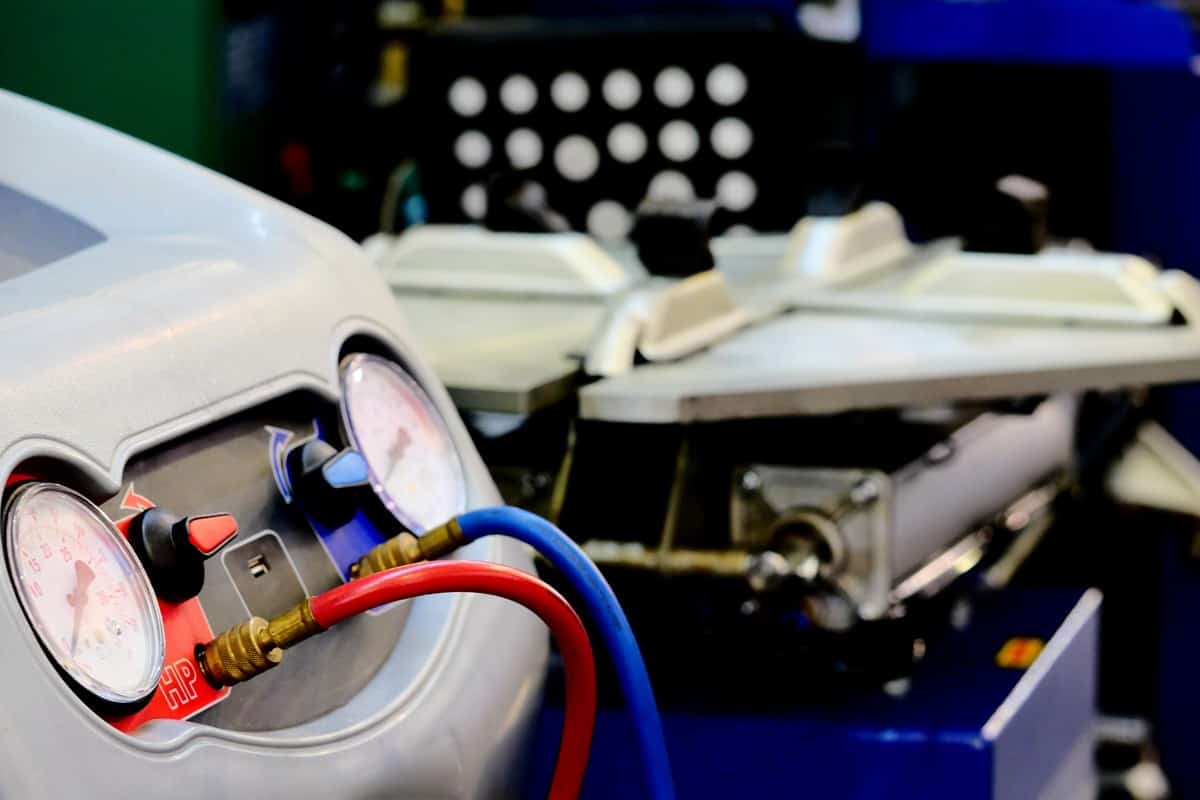
Low Freon or refrigerant is the most common issue that will cause your car's air conditioning not to blow cold. Check the refrigerant level in your car's system and add more if needed. If you're still having issues, it's best to take your car to a professional for diagnosis and repair.
Made it to the end? Here are other articles you might find helpful:
Why Is My Freon Gauge In The Red – What To Do?
